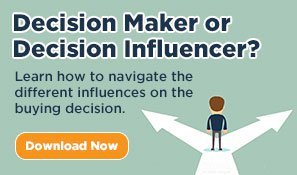
Some sales go from step to step and lead smoothly to an agreement and an order. Other times, things stall and you’re not sure why. It might happen at one of the three tipping points in the sale process. There are many reasons a stall can happen, and there’s a quick way to determine what is helping and what is hindering the process.
At some point in our life, we’ve had someone tell us to draw a line down the middle of a piece of paper, and write all the pros for a decision on one side and the cons on the other. The formal name is a “decision balance sheet.” Ben Franklin was known to use them. What makes this simple exercise effective is that it helps us put on paper what we already know — but haven’t thought enough about.
Another variation of this process is a force-field analysis. It’s used in social science. Our founder Steve Marx applied it to the sales process. The force field approach looks at the forces that are influencing a situation. It looks to see if they are driving movement toward a goal (helping) or blocking momentum toward a goal (hindering).
What’s helping the relationship move forward?
In the force field approach to sales, you would draw that same line down the middle of the page and label the left helping, and the right hindering. Then step back and ask yourself what are the positive forces in this business relationship. Maybe the client has already had success with your solutions. Maybe there is a new need that you know you can address.
When you think you’ve written them all down, come up with three more, because the real insights come after you’ve written down all the obvious answers.
What’s hindering things from moving forward?
Then turn to the right side of the page and ask yourself what is hindering this business relationship from growing and moving forward. Be honest with yourself. The sources could be something out of your control, like the timing and availability for financing. Or it could something with you and the way you approach the relationship. It could be something with your internal support team that makes your solution not as easy to buy and implement. Or it could be about someone at the client’s company.
Consider the people at the client’s company.
Two key types of people who need to be involved on the client side are the decision maker and the decision influencer. Even when there’s a committee, there is usually only one decision maker. As a salesperson, you probably already have your focus on what is helping or hindering your relationship with the decision maker. Another group to consider are the decision influencers. They may not sign the contract, but they are the end users who will be directly affected by your solutions. Do you know who they are? Have you addressed their needs? Have you considered if they are helping or hindering your cause within their company?
Put it into practice.
Now it’s your turn to use this on a few of your prospects and clients. I prefer physical paper and pen for this, but your computer will work too. Either way, be sure to save it in the client folder to reference later.
Start with these, right now, or schedule time in your calendar later today or this week:
- 3 good prospects or target account.
- 3 active, but disappointing clients.
- 3 key accounts you want to grow.
This simple exercise that takes as little as 5-10 minutes per account can provide a great ROI on your time invested. Give it a try!



